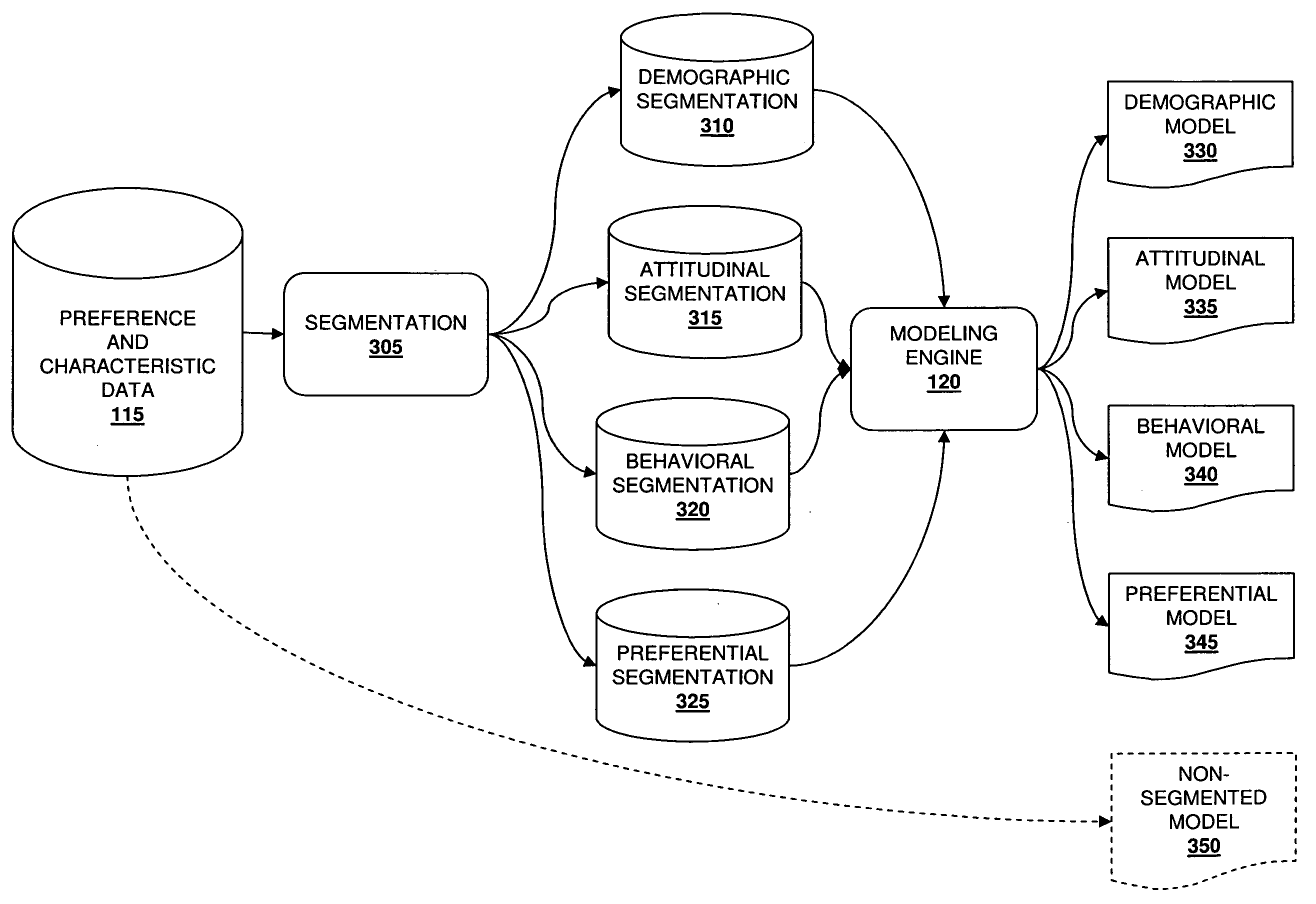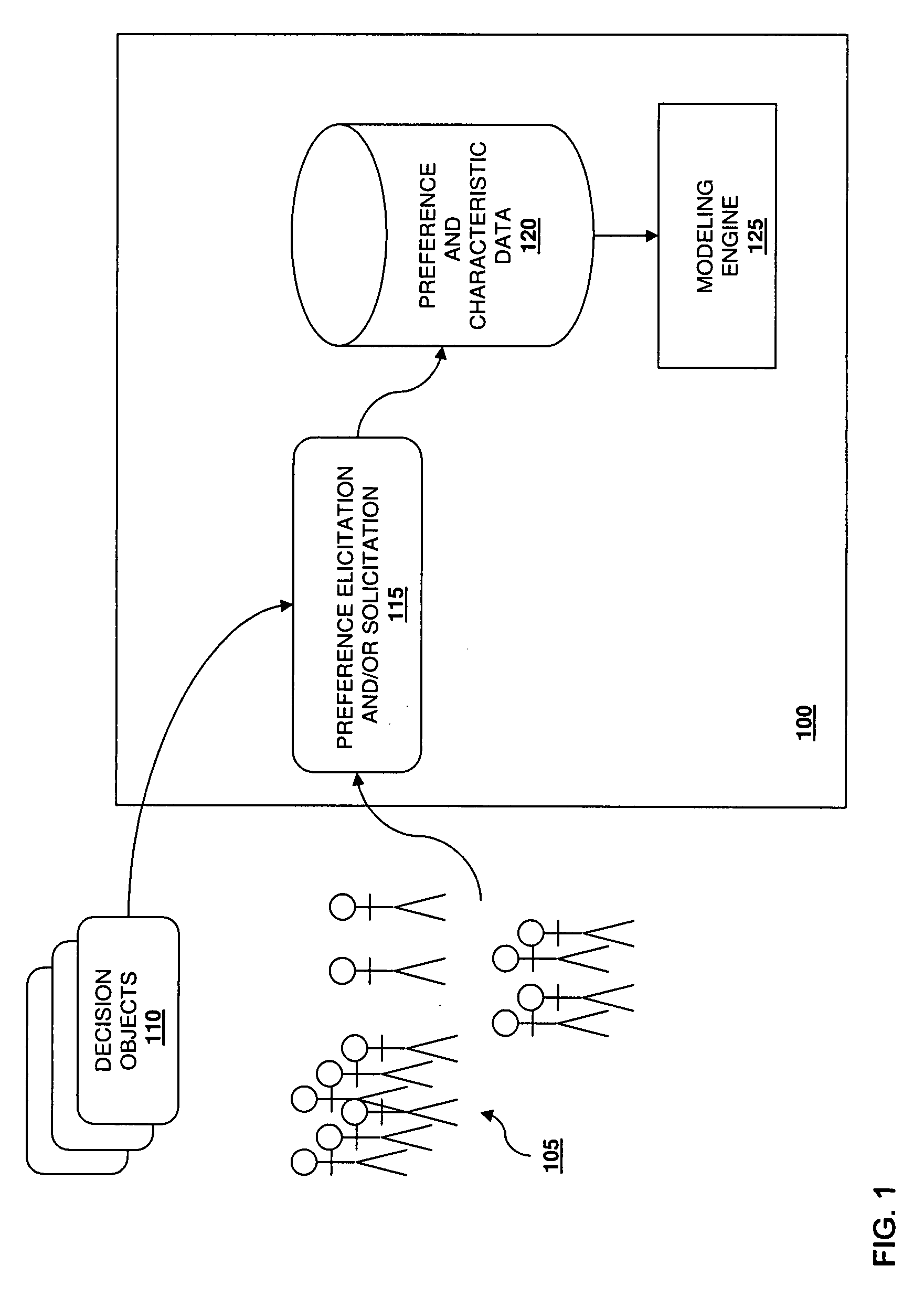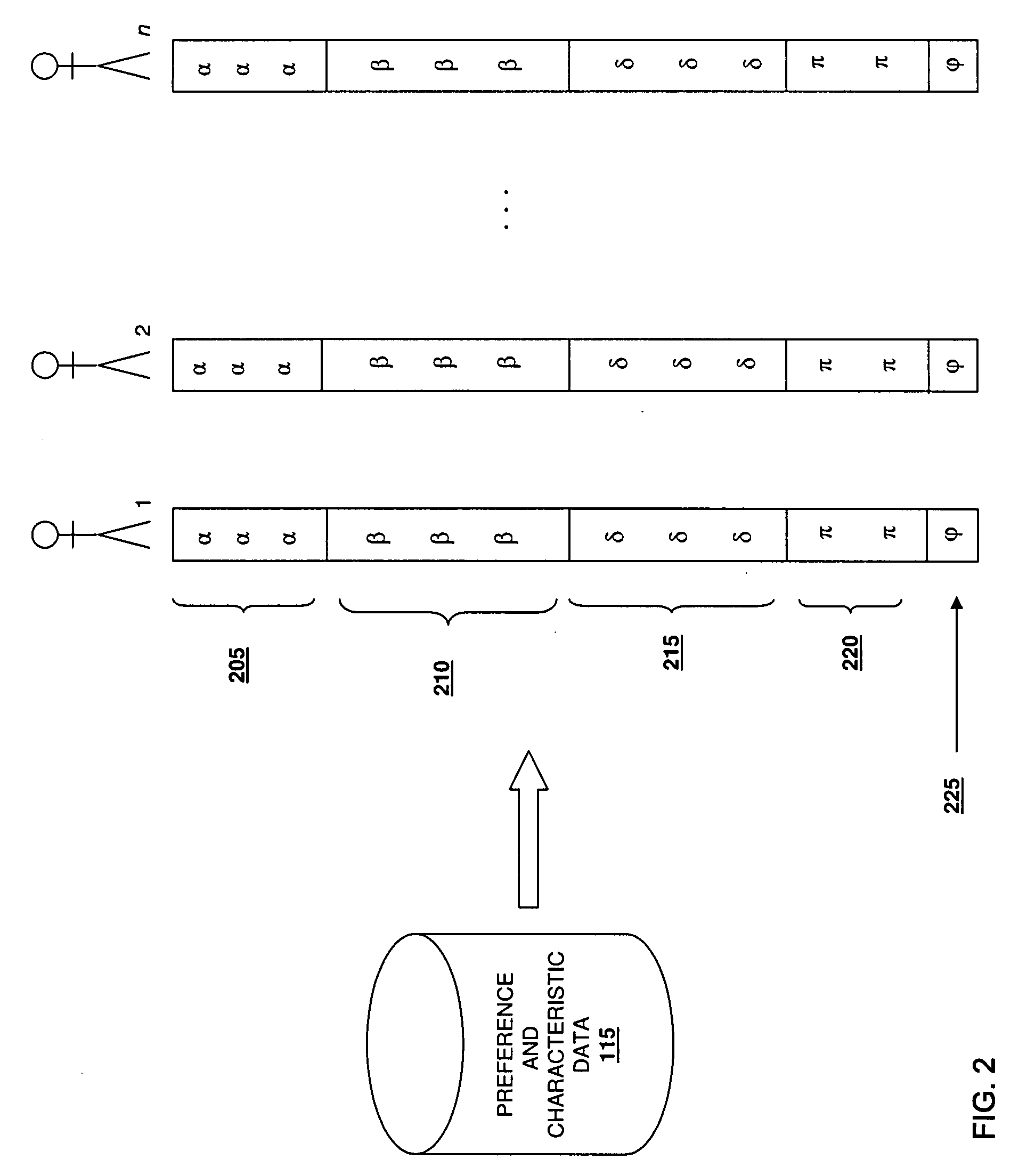Method and System for Predicting Personal Preferences
a personal preference and system technology, applied in the field of personal preference prediction system, can solve the problems of difficult to simply ascertain the wants and needs of customers, long development lead-time for some products, and high labor intensity, and achieve the effect of predicting individual level behaviors and greater accuracy
- Summary
- Abstract
- Description
- Claims
- Application Information
AI Technical Summary
Benefits of technology
Problems solved by technology
Method used
Image
Examples
Embodiment Construction
[0027]Several methods and techniques claim to estimate an individual's preferences for products or services, and in some cases the methods have been combined with conjoint analysis to generate hierarchical conjoint models for various research applications. In practice, these multi-level models “borrow” information from higher-level parameters that, for example, apply to a group of individuals based on some characteristic common to members of the group in order to estimate lower-level (i.e., individual-specific) parameters. As a result, the final estimates for an individual's affinity for an object reflect a balance of both group and individual level information. The exact balance and the precise information that gets borrowed from the group parameters to estimate the individual parameters depends on which individuals are included in the model and on the assumptions about the distribution of parameters across and within individuals. Often, strict hierarchical models tend to force ind...
PUM
 Login to View More
Login to View More Abstract
Description
Claims
Application Information
 Login to View More
Login to View More - R&D
- Intellectual Property
- Life Sciences
- Materials
- Tech Scout
- Unparalleled Data Quality
- Higher Quality Content
- 60% Fewer Hallucinations
Browse by: Latest US Patents, China's latest patents, Technical Efficacy Thesaurus, Application Domain, Technology Topic, Popular Technical Reports.
© 2025 PatSnap. All rights reserved.Legal|Privacy policy|Modern Slavery Act Transparency Statement|Sitemap|About US| Contact US: help@patsnap.com



